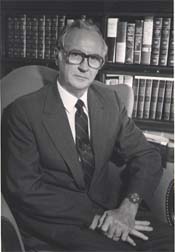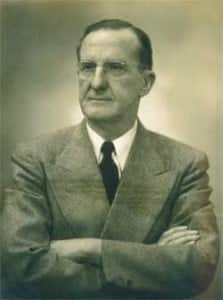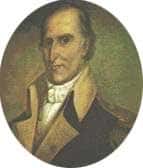“He Went About Doing Good”
Our subject today is the Rev. James A. Bryan, known affectionately as “Brother Bryan.” To introduce him, I would like to take the liberty of quoting from the opening three paragraphs in Dr. David Calhoun’s recent article, which appeared in the Fall 2012 issue of PRESBYTERION:
![James Alexander Bryan [20 March 1863 - 28 January 1941]](https://thisday.pcahistory.org/wp-content/uploads/2013/03/bryanJamesA.jpg) “For years James Bryan walked the streets of Birmingham, Alabama, ministering in the name of Jesus to the people of the fast-growing city–not only to respectable people but also to gamblers, drunkards, and prostitutes. He was the pastor of Third Presbyterian Church, a downtown church surrounded by African Americans, poor white families, Jews, and immigrant workers from Italy, Hungary, Greece, and other countries. Bryan knew the people of Birmingham and they knew and loved him. They called him “Brother Bryan.” To him all people, black and white, native-born and immigrants, poor and rich, were his brothers and sisters.
“For years James Bryan walked the streets of Birmingham, Alabama, ministering in the name of Jesus to the people of the fast-growing city–not only to respectable people but also to gamblers, drunkards, and prostitutes. He was the pastor of Third Presbyterian Church, a downtown church surrounded by African Americans, poor white families, Jews, and immigrant workers from Italy, Hungary, Greece, and other countries. Bryan knew the people of Birmingham and they knew and loved him. They called him “Brother Bryan.” To him all people, black and white, native-born and immigrants, poor and rich, were his brothers and sisters.
“James Alexander Bryan was born near Kingstree, South Carolina, on March 20, 1863, two years after South Carolina seceded from the Union. His parents were poor in money, but rich in faith. Every morning and evening the family gathered to sing a psalm or hymn, to read a passage from the Bible, and to kneel in prayer. At his little country school James studied reading, writing, arithmetic–and the Westminster Shorter Catechism. At the town’s Presbyterian church he listened to good sermons. A visiting preacher who made a deep impression on the young boy was Hampden C. DuBose, a student at Columbia Theological Seminary who, during a summer vacation, supplied Bryan’s home church. DuBose became a missionary to China, where he preached, planted churches, and successfully fought the opium trade.
“Bryan studied at an academy in Raleigh and at the University of North Carolina, where he was known for his ability as a public speaker. He went north to Princeton Theological Seminary to prepare for the ministry, arriving in September 1886 with $1.85 in his pocket. The piety of the slim young Southerner earned him the nickname “the saint,” spoken not in mockery but seriously by his fellow students. Bryan loved his professors–William Henry Green, Alexander McGill, Caspar Wistar Hodge, and B. B. Warfield–and loved his studies, especially those in Bible and preaching. In Princeton Bryan worked at the Negro church on Witherspoon Street, teaching Sunday School and often leading the Wednesday prayer meeting. Here among black friends he was at home. Years later when his Princeton Seminary class gathered for its fortieth reunion, Bryan slipped away from the festivities to preach to the people at Witherspoon Street Presbyterian Church.”
[To read the full article by Dr. Calhoun, please contact Presbyterion Editor, Covenant Theological Seminary, 12330 Conway Road, St. Louis, MO 63141. The annual subscription rate for the journal is $8.50 per year, or you may be able to secure a copy of that issue through Inter-Library Loan.]
Recently I was able to locate and purchase a copy of Brother Bryan’s sermons for addition to the PCA Historical Center’s research library. Apparently this was one of three volumes that were published between 1900 and 1930. Few copies have survived. The first was a slim volume of 53 pages, then another of 72 pages, which we have in photocopy, and the last, our recent accession, is a booklet of 111 pages. From that last booklet, I have selected one sermon to post here today, to give a better sense of Brother Bryan’s ministry and also because this particular sermon has some additional biographical insights:
EVERY LIFE WITHOUT PRAYER IS FAILURE.
(March 26, 1927)
Prayer to God is the lifting up of the soul to God. It is the pouring out of the heart unto God, our Father, in adoration, praise, confession and submission.
Someone asked the question, “What is the need of the Christian Life?” Another person answered, “Love for Jesus Christ.” We know this is true. You cannot love anyone unless you are acquainted with them. You cannot love Christ unless you are well acquainted with Him. You become acquainted by reading the Bible and especially by communing with Him in prayer. The people whose lives have counted for the most in the world have been people who were intercessors unto God.
Think a minute of Moses, how he interceded for God’s people, who had forgotten God. He spent 40 years in the school of prayer in the desert of Midian. It was his prayer life that made his life powerful. Prayer to God is asking what we wish, expecting to receive the things according to God’s will. We go to our Heavenly Father knowing that He will not withhold from us the best things for us.
Think of Elijah praying to God, the heaven’s being shut for three years and six months. I can hear him praying for rain and the heavens opened and the rain came. God’s people in the time of Samuel sent for him and begged that he not fail to pray for them.
Is your life a life of prayer? We have a great many church workers in this country but we need more church prayers. Praying is not saying your prayers. Christ taught us to enter our rooms and pray to our Father in secret. Christ teaches us to pray always.
Paul writes, pray without ceasing. Then he says: “I exhort first of all the prayers, supplications, intercessions be made for all people.” Do you enjoy praying? How much time a day do you spend in prayer? How many people have you on your prayer list? I am sure that I cannot meet the trials, the temptations, the burdens, the sorrows of life, without spending much time in prayer.
Martin Luther said, “I have so much to do I spend the ealry hours of the morning in prayer to God.” If you haven’t anyone else to pray for, pray for the writer of this note.
The calls come thick and fast, day and night. I have just returned from a cottage over the mountain, a father dying in one room, mother and children in sorrow, in the other. Pray for hundreds in that condition. The phone has just rung bringing the news of old people in a certain section of this city, unable to work, without food or fire. Pray to God that He will supply the needs of hundreds; that He will heal thousands of broken hearts. “There are lonely hearts to cherish, while the days are going by. There are weary souls that perish, while the days are going by.”
If Christ felt the need of spending whole nights in prayer and rising before day and going to the mountainside to pray, do you not feel the same need? Certainly you do. Christ is praying for us now. He is the only advocate between God and man. He presents our case to the Father. One of the sweetest recollections that I have of my earthly father is this: he took me to Charleston, S.C., when I was a small boy. Late at night when everything was still in the hotel, I heard a voice; in the dim moonlight that shone through the window I saw my father on his knees. I heard him praying for me. I think of that scene most every day and think of the prayer that I heard him offer. Maybe our children do not need so many material things but they need our prayers and they need to be taught to pray. You cannot have a spiritual life, without prayer.
Will you not pray more? Will you not pray for your own city, for every man, woman and child, that Christ may take His rightful place in every life? Pray that all of the people will be intercessors unto God.




